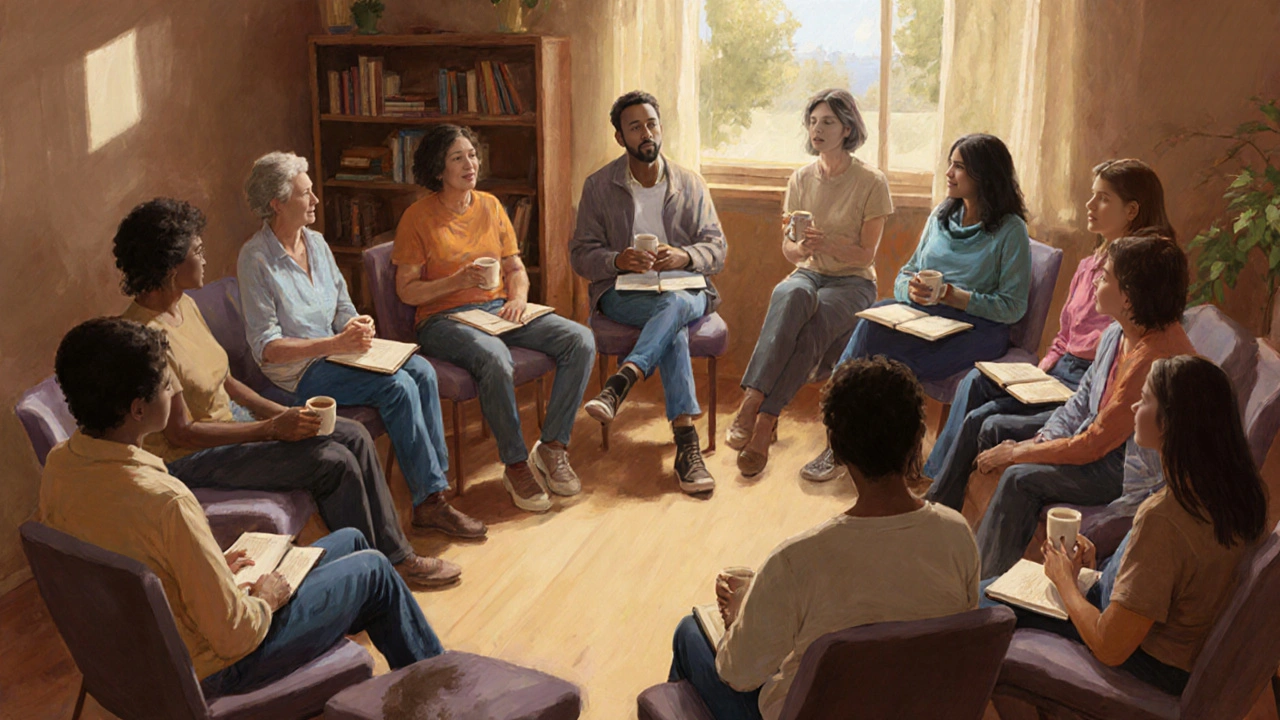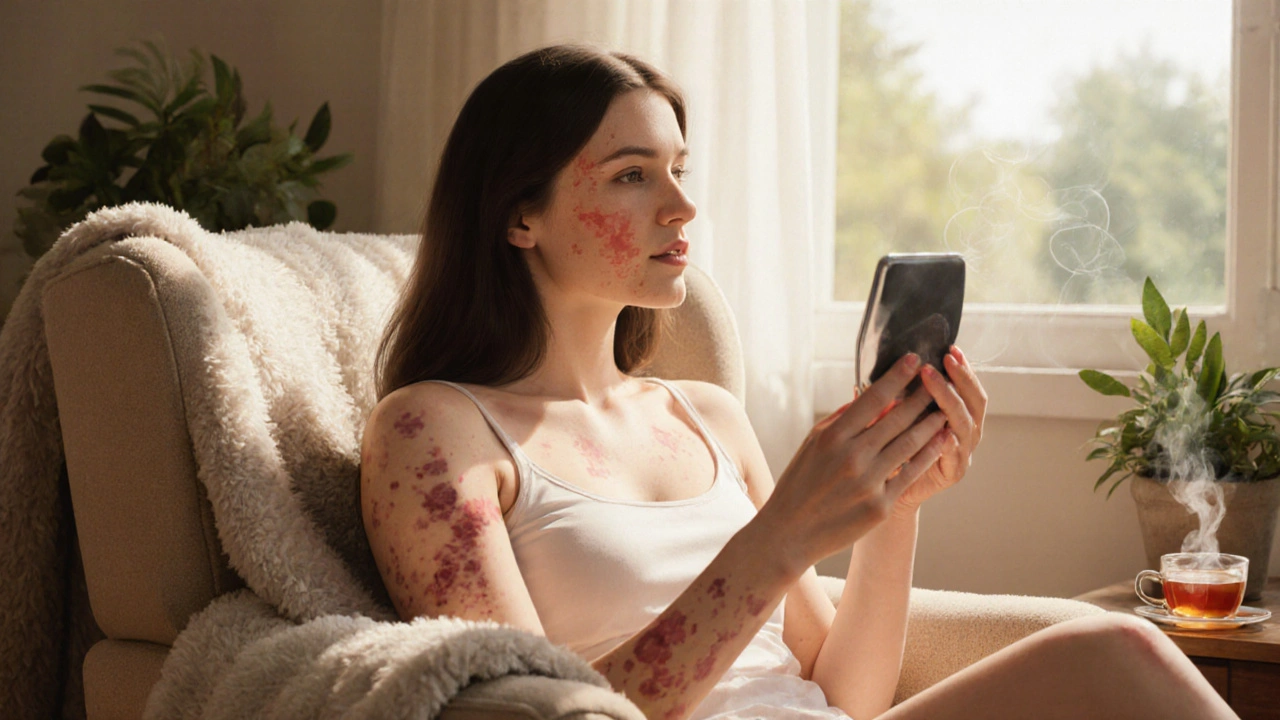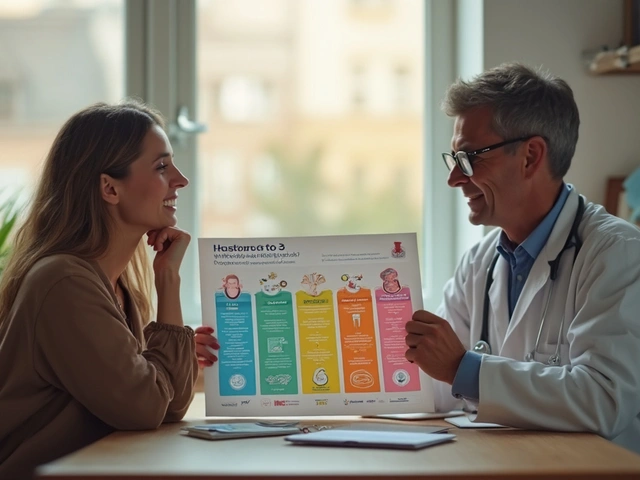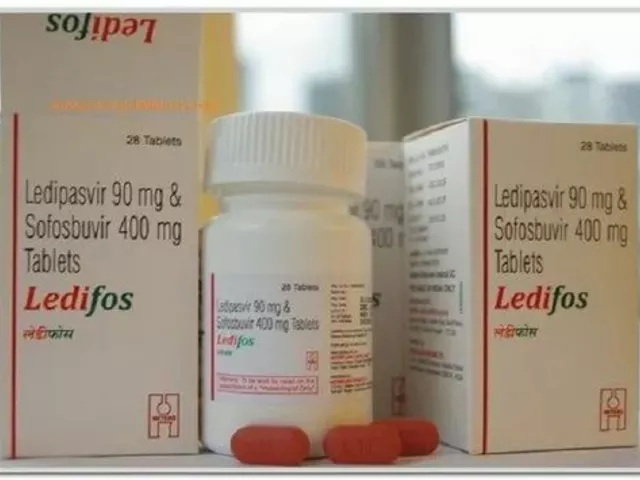Quick Takeaways
- Diagnosis often triggers shock, grief, and anxiety.
- Visible skin lesions can lower self‑esteem and increase social isolation.
- Chronic itching (pruritus) amplifies stress and disrupts sleep.
- Professional counseling, support groups, and mindfulness are proven coping tools.
- Regular check‑ins with your dermatologist and mental‑health provider improve quality of life.
Finding out you have Mycosis Fungoides is a rare form of cutaneous T‑cell lymphoma that starts in the skin can feel like the ground has shifted beneath you. Beyond the physical symptoms-red patches, scaly plaques, relentless itching-the emotional toll often goes unspoken. This article walks through the mental roller‑coaster that many patients experience, offers practical ways to cope, and shows how a coordinated medical team can ease the burden.
What Is Mycosis Fungoides?
Mycosis Fungoides belongs to the broader family of Cutaneous T‑cell lymphoma (CTCL). It typically begins with flat, itchy patches that can look like eczema or psoriasis. Over time, these patches may thicken into raised skin lesions (red or brown patches, plaques, or tumors that appear on the body). The disease progresses slowly, but because it lives in the skin, appearance changes are often the first sign patients notice.
The Emotional Journey Starts with Diagnosis
The moment a doctor says, "You have Mycosis Fungoides," many people report a cascade of feelings: denial, disbelief, and a deep sense of loss. It’s natural to grieve the health you thought you had. This stage mirrors the five stages of grief-denial, anger, bargaining, depression, and acceptance-though they can appear in any order or repeat.
One Australian patient described the moment as "a punch to the gut" that left him questioning his future, career, and even his identity. The uncertainty of a chronic cancer that is visible on the skin fuels a constant undercurrent of fear.
Common Emotional Responses
Research from the International Journal of Dermatology shows that over 40% of Mycosis Fungoides patients report clinically significant depression (persistent low mood, loss of interest, and feelings of hopelessness), while 55% experience heightened anxiety (excessive worry, racing thoughts, and physical tension). Below are the main emotional triggers:
- Fear of progression: Mycosis Fungoides is a cancer, and the unknown trajectory fuels anxiety.
- Body image concerns: Visible lesions can make you feel self‑conscious in public.
- Social isolation: People often avoid skin‑related conversations, leading to loneliness.
- Sleep disruption: Persistent pruritus (intense itching that worsens at night) makes it harder to rest, which amplifies irritability.
- Treatment fatigue: Ongoing phototherapy or systemic meds can feel endless.
How Physical Symptoms Shape Mood
It’s not just the diagnosis; the day‑to‑day experience of Mycosis Fungoides can erode emotional resilience. Itchy skin (pruritus) triggers a stress response-cortisol spikes, which in turn increase inflammation, creating a vicious loop. The constant urge to scratch can cause visible skin damage, reinforcing shame and embarrassment.
Furthermore, treatment side‑effects-dry skin from topical steroids, fatigue after phototherapy, or nausea from oral chemotherapy-add layers of discomfort that can push mood into a negative direction.

Building a Support Network
Professional help matters. A dermatologist (a medical doctor specializing in skin conditions) who understands the psychological dimension of skin cancers can refer you to psychosocial support (services that address emotional, social, and psychological needs). Many clinics now have integrated mental‑health providers on staff.
Beyond the clinic, support groups (organized gatherings-online or in‑person-where patients share experiences and coping tips) offer a safe space to vent, ask questions, and find solidarity. A 2023 study of Australian patients showed that regular group attendance reduced depression scores by 12% after six months.
Practical Coping Strategies
Below is a checklist you can keep by your bedside. These actions have been vetted by dermatologists and psychologists who work with Mycosis Fungoides patients.
- Schedule a monthly mental‑health check‑in, even if you feel "fine".
- Track symptom flare‑ups in a journal-note itch intensity, mood, and triggers.
- Practice a 5‑minute mindfulness breathing exercise before bedtime to lower cortisol.
- Join a local or virtual support group; aim for at least one meeting per month.
- If you notice persistent sadness, reach out to a therapist trained in chronic illness.
- Use gentle, fragrance‑free moisturizers to soothe pruritus-less itch means less stress.
- Discuss any side‑effect concerns with your dermatologist; dose adjustments can improve comfort.
Emotional Challenges vs. Coping Strategies
| Emotional Challenge | Evidence‑Based Coping Strategy | Typical Outcome |
|---|---|---|
| Fear of disease progression | Structured information sessions with your dermatologist + realistic prognosis discussion | Reduced anxiety scores by up to 30% |
| Body‑image concerns | Body‑positive counseling + optional cosmetic camouflage | Improved self‑esteem and social confidence |
| Sleep disruption from pruritus | Night‑time cool‑mist moisturizers + CBT‑I (Cognitive‑Behavioral Therapy for Insomnia) | Average sleep latency reduced by 20 minutes |
| Social isolation | Weekly support‑group video calls + community volunteer activities | Increased sense of belonging, reduced loneliness scores |
| Treatment fatigue | Energy‑management planning + short, frequent walks | Higher daily activity levels without worsening fatigue |
When to Seek Professional Help
Not every mood dip warrants a therapist, but certain red flags signal it’s time to act:
- Feelings of hopelessness that last longer than two weeks.
- Thoughts of self‑harm or suicide.
- Sudden increase in alcohol or substance use.
- Physical symptoms worsening because you’re ignoring treatment.
- Persistent insomnia despite using sleep hygiene techniques.
Contact your dermatologist first; they can refer you to a mental‑health specialist familiar with chronic skin conditions.
Long‑Term Outlook: Living Beyond the Diagnosis
Mycosis Fungoides is generally indolent, meaning many patients live for decades with stable disease. The key to a satisfying life lies in mastering the emotional side as much as managing the skin. Over time, patients who actively engage in coping strategies report higher quality‑of‑life scores-even when the disease is active.
Remember that emotions are not fixed; they fluctuate with treatment cycles, personal events, and even the weather. By staying attuned to your mental state, you give yourself the best chance to enjoy the moments that matter.

Frequently Asked Questions
Can Mycosis Fungoides cause depression?
Yes. Studies show that up to 40% of patients develop clinically significant depression, often linked to chronic itch, visible lesions, and the stress of a cancer diagnosis.
What are the best ways to manage night‑time itching?
Use a fragrance‑free, ceramide‑rich moisturizer right after bathing, keep bedroom temperature cool, and consider a short course of antihistamines prescribed by your dermatologist. Pair this with a relaxation routine like guided breathing.
Are there online support groups for Mycosis Fungoides?
Several organizations run moderated forums and monthly video chats, including the Mycosis Fungoides Society and larger skin‑cancer foundations. A quick search for "Mycosis Fungoides support group" will list options worldwide.
When should I talk to a mental‑health professional?
If feelings of sadness, anxiety, or hopelessness persist for more than two weeks, or if you notice changes in sleep, appetite, or motivation, schedule an appointment. Early intervention prevents worsening symptoms.
Can lifestyle changes improve my emotional wellbeing?
Absolutely. Regular low‑impact exercise, balanced nutrition, adequate hydration, and mindfulness practices have all been linked to lower anxiety and depression scores in chronic disease patients.






liza kemala dewi
September 28, 2025 at 14:36
Embarking upon the emotional odyssey that follows a Mycosis Fungoides diagnosis invites a profound contemplation of the self, wherein the palpable presence of disease upon the skin becomes a mirror reflecting the interior landscape of one's psyche. The initial cascade of shock, often likened to an abrupt seismic tremor, destabilises entrenched narratives of health and invulnerability, compelling an individual to re‑evaluate deeply held assumptions about mortality and identity. As the mind wrestles with the undeniable reality of a cutaneous T‑cell lymphoma, a dialectic emerges between denial and acceptance, each phase embodying a distinct philosophical posture towards suffering. This dialectic, reminiscent of the ancient Socratic method, invites the patient to interrogate the essence of suffering: is it merely a physiological malady, or does it also constitute a metaphysical trial that can engender growth? Moreover, the chronic pruritus that torments the epidermis functions as an incessant reminder of corporeal fragility, a somatic metronome that punctuates each moment with a call to mindfulness. By embracing mindful breathing exercises, one can transform the reflexive act of scratching into an opportunity for embodied awareness, thereby attenuating the feedback loop of cortisol‑induced inflammation. In parallel, it is incumbent upon the therapeutic team to adopt a biopsychosocial framework, recognising that the skin, as the most visible organ, serves as a conduit for both external judgement and internal self‑esteem. When the patient engages in support groups, the shared narratives operate as a collective phenomenology, normalising emotional responses that might otherwise be pathologised. The act of journalling flare‑ups alongside mood fluctuations further cultivates a metacognitive skill set that empowers the individual to anticipate triggers and enact preemptive coping strategies. It is essential, too, to appreciate the role of narrative identity; by reframing one's story from one of victimhood to one of resilient agency, the patient can reconstruct a more adaptive self‑concept. While professional counselling provides structured techniques such as cognitive‑behavioral therapy, the patient’s own philosophical reflections on impermanence can complement these modalities, fostering a deeper sense of equanimity. Ultimately, the synthesis of clinical care, psychosocial support, and existential reflection offers a holistic pathway through which the emotional turbulence of Mycosis Fungoides can be navigated with grace and purpose.